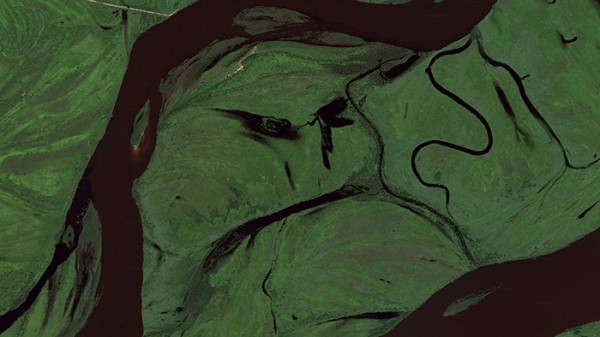


Work from Google Faces
“The way we perceive our environment is a complex procedure. By the help of our vision we are able to recognize friends within a huge crowd, approximate the speed of an oncoming car or simply admire a painting. One of human’s most characteristic features is our desire to detect patterns. We use this ability to penetrate into the detailed secrets of nature. However we also tend to use this ability to enrich our imagination. Hence we recognize meaningful shapes in clouds or detect a great bear upon astrological observations.
Objective investigations and subjective imagination collide to one inseparable process. The tendency to detect meaning in vague visual stimuli is a psychological phenomenon called Pareidolia, and captures the core interest of this project.
We were driven by the idea, to explore how the psychological phenomenon of Pareidolia, could be generated by a machine. We wrote an algorithm simulating this tendency, as it continuously searches for face-like shapes while iterating above the landscapes of the earth. As a major inspiration we took a look at the “Face on Mars” taken by Viking 1 on July 25, 1976.
One of the key aspects of this project, is the autonomy of the face searching agent and the amount of data we are investigating. The source of our image data is halfway voluntary provided by Google Maps. Our agent flips through one satellite image after the other, in order to feed the face detection algorithm with landscape samples. The corresponding iteration algorithm steps sequentially along the latitude and longitude of our globe. Once the agent circumnavigated the world, it switches to the next zoom level and starts all over again.
Our Facetracker already circumnavigated the world a couple of times and astonished us with quite versatile results. As it continues to travel the world within the upcoming months, it continuously zooms into the earth. This process decreases the step-size for each iteration and therefore increases the amount of images and travel time exponentially. Some of the detected images aren’t usable at all, as we are not able to recognize any face-like patterns within the detected images. Other satellite images, on the other hand, inspired our imagination in a tremendous, yet funny way. However the search goes on, as our diligent robot continuous investigation. Below we have collected several images already found. Click on the images to see it directly on Google Maps.” -Onformative
Fom Ilikethisart.
No hay comentarios:
Publicar un comentario